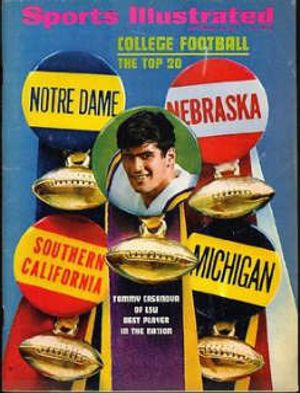The genre of popular music during my teen years certainly was more appealing to my ears, with hummable melodies, harmonies that followed tenets of musical theory and dynamics that did not offend the tympanic membranes. I honestly thought that all change that could possibly happen was frozen in that moment, and captured in the popular Bob Dylan folk song from 1964.
I was wrong. Never could I have dreamed of changes that have unfolded in world events, technological advances or personal perspectives. My view of “old” people was that of over-the-hill, sedentary existence remotely known as “retirement.”
It is change associated with what we young 60-plus-year-olds face that is the focus of the Senior Ophthalmologist Committee. It recognizes the continuing diversity of how these changes impact both our professional as well as private lives. We strive to bring programmatic themes to our community, and believe AAO 2017 in New Orleans will crystallize topics of importance to you.
A few enticements, all of which center on change:
When you’re retirement age, but don’t want to quit, what are your options? Tom Harbin, MD, MBA, and Sam Masket, MD, have put together a masterful symposium, Non-Exit Strategy - How to Extend Your Practice and Live Without Fully Retiring (SYM 48), which will address this topic. Their panel includes Dallas author Dee O’Neill Williams, an expert in assessing mental competence in the elderly. Tuesday, Nov. 14 from 8:30 a.m. to 10 a.m.
In a related session, Paul Orloff, MD, will address Transitions in Practice: Slowing Down and its Implications in his Breakfast with the Experts sessions on both Sunday (B110) and Monday (B139). Another breakfast option is Tom Harbin’s focus on Stopping Surgery: When, Why, and Issues to Consider, offered both Sunday (B109) and Monday (B138) as well.
When you just have had it, and think the grind is no longer tolerable, what can you do to convert burn-out to enthusiasm? Jean Ramsey, MD, MPH, and Alfredo Sadun, MD, PhD, along with others from our profession, will address Burnout in Ophthalmology: Starting and Finishing (LL25) in the Learning Lounge in Hall G. Monday, Nov. 13 from 11 a.m. to noon.

SO Program Speaker, Dr. Casanova on the
cover of the September 13, 1971 issue of
Sports Illustrated
Need an update for managing common ischemic ocular problems in your patients — or perhaps just concerned about your own vision risks? Gwen Sterns, MD, from the SO Committee, in collaboration with the Academy’s Committee on Aging as well as the North American Neuro Ophthalmology Society (NANOS), will co-host Management of Common Ischemic Neuro-Ophthalmic Conditions of the Elderly (SYM13). Sunday, Nov. 12 from 12:45 p.m. to 1:45 p.m.
If technological challenges are passing you by, attend Marketing 101: Kickstart Your Website, Social Media, and Blog (SPE06), instructed by Randy Wong, MD, which addresses building web sites, blogging and social media. Saturday, Nov. 11 from 1 to 4 p.m.
What other matters are noteworthy for our age group? Certainly, retirement planning, wrapping up of malpractice insurance, estate planning, and other business-related matters will be addressed during the Consultant Roundtable Discussions in the SO lounge. Monday, Nov. 13 from 1 to 2 p.m.
And finally, for your inspiration (and please bring guests), we have the SO Special Program and Reception (SPE24) on Monday, Nov. 13 from 2:30 to 4 p.m., reception until 5 p.m. Two ophthalmologists will tell their unique journeys to change. Imagine that your established practice is suddenly interrupted by a natural disaster. Your patients have all moved. Your equipment has been destroyed. Your private practice has no patients, staff, or equipment. This is what Monica Monica, MD, faced after Hurricane Katrina. Her indomitable personality will shine through as she describes ensuing changes.
The other ophthalmologist, Thomas Casanova, III, MD, has an equally unique version of change. Before medical school happened, he was a star NFL linebacker for the Cincinnati Bengals. The world was his oyster, so to speak. But his family roots, sense of life’s purpose, and intellectual thirst led to an early athletic retirement into the rigors of medical school followed by a career in ophthalmology. If you’ve ever wondered what satisfies, as well as not satisfies a professional athletic career, and how a professional ophthalmic career compares, hearing his perspective will carry great value.